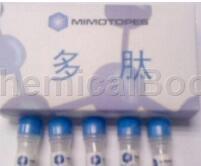Background and overview[1]
Phenylvasopressin is a synthetic peptide similar to vasopressin, which can constrict peripheral blood vessels, increase blood pressure and stop bleeding. This product has a slow and long-lasting blood pressure boosting effect. It can be used clinically for shock, blood pressure drop and hemostasis. Administer 5 to 10 units intravenously once. Adverse reactions include pale complexion, urgency of urination, abdominal pain, and diarrhea. Vomiting may occur in overdose. Pregnant women and the elderly should use with caution. Contraindicated in patients with coronary artery disease.
Medical properties and applications[2]
Phenylvasopressin is a synthetic peptide similar to vasopressin, which can constrict peripheral blood vessels, increase blood pressure and stop bleeding. The pressure-increasing effect is slow and long-lasting. It can be used for shock, drop in blood pressure and hemostasis.
Intravenous drip: 5 to 10 units, diluted 100 to 200 times with normal saline, instill slowly and monitor changes in blood pressure.
Notes and Taboos[2]
Adverse reactions of phenylvasopressin include pale complexion, urgency of urination, abdominal pain and diarrhea. Vomiting may occur in overdose. Disabled for patients with coronary heart disease. Pregnant women and the elderly should use with caution.
Specifications[2]
Injection: 5 units/1ml, 10 units/2ml.

Other research[3]
Compare the effects of epinephrine and phenylvasopressin on arterial pressure in normal, hypertensive and atenolol-treated hypertensive rats. The hypertension model is a one-kidney-clamp (1K1C): In 45-day-old male Wistar rats, the main aorta of the left kidney was partially contracted and the right kidney was surgically removed. 1K1C hypertensive rats received atenolol (90 mg/kg/day) via gavage for 2 weeks. Twenty-eight to 35 days after induction of hypertension, a catheter was inserted into the left carotid artery to record direct blood pressure values. The following parameters were recorded: minimum blood pressure response, maximum hypertensive response, response duration and heart rate. The results showed that epinephrine played an important role in lowering blood pressure, while phenylvasopressin played an important role. Untreated hypertensive rats showed more pronounced vasodilation. In all groups, treated and untreated rats showed the same degree of hypertensive response. Atenolol reduces the hypertensive response to both vasoconstrictors in rats. Responses to phenylvasopressin lasted longer than epinephrine in all groups. Only in the antihypertensive group, epinephrine increased heart rate, whereas nonvasopressin decreased this parameter. Results indicate that phenylvasopressin has an equivalent stress response and displays a greater range of action compared to epinephrine.
Main reference materials
[1] Pocket Manual of New Specialty Drugs
[2] New Practical Drug Handbook
[3] Comparison of epinephrine and felypressin pressure effects in 1K1C hypertensive rats treated or not with atenolol


